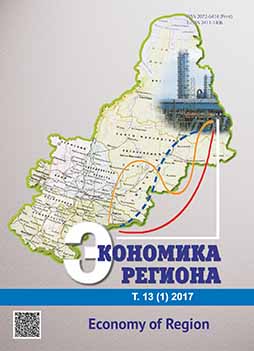Региональная балансовая модель финансовых потоков на основе секторального подхода системы национальных счетов
Regional Balance Model of Financial Flows through Sectoral Approaches System of National Accounts
Author(s): Ekaterina Aleksandrovna Zaharchuk, Aleksey Fedorovich PasynkovSubject(s): Economy, Geography, Regional studies
Published by: Институт экономики Уральского отделения Российской академии наук
Keywords: system of national accounts model of financial flows; region; institutional sector; corporations; households; state management; regional accounts; net lending; net borrowing;
Summary/Abstract: The main purpose of the study, the results of which are reflected in this article, is the theoretical and methodological substantiation of possibilities to build a regional balance model of financial flows consistent with the principles of the construction of the System of National Accounts (SNA). The paper summarizes the international experience of building regional accounts in the SNA as well as reflects the advantages and disadvantages of the existing techniques for constructing Social Accounting Matrix. The authors have proposed an approach to build the regional balance model of financial flows, which is based on the disaggregated tables of the formation, distribution and use of the added value of territory in the framework of institutional sectors of SNA (corporations, public administration, households). Within the problem resolution of the transition of value added from industries to sectors, the authors have offered an approach to the accounting of development, distribution and use of value added within the institutional sectors of the territories. The methods of calculation are based on the publicly available information base of statistics agencies and federal services. The authors provide the scheme of the interrelations of the indicators of the regional balance model of financial flows. It allows to coordinate mutually the movement of regional resources by the sectors of «corporation», «public administration» and «households» among themselves, and cash flows of the region — by the sectors and directions of use. As a result, they form a single account of the formation and distribution of territorial financial resources, which is a regional balance model of financial flows. This matrix shows the distribution of financial resources by income sources and sectors, where the components of the formation (compensation, taxes and gross profit), distribution (transfers and payments) and use (final consumption, accumulation) of value added are mutually linked by sectors (corporations, public administration, households) on the principle of double entry. The balancing indicators of financial resources movement are the balance of net lending/borrowing of institutional sectors, which shows the excess of (lack of) financial resources of individual sectors in their use.
Journal: Экономика региона
- Issue Year: 13/2017
- Issue No: 1
- Page Range: 319-330
- Page Count: 12
- Language: Russian

